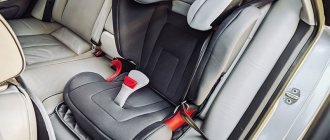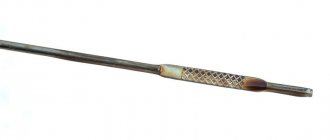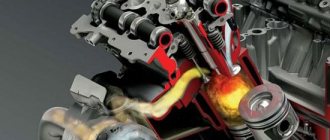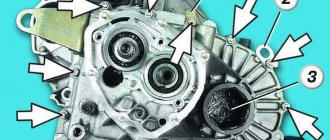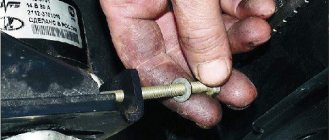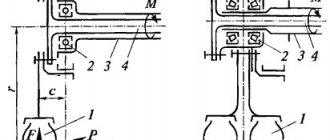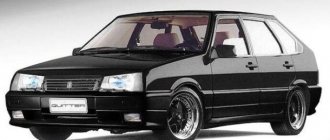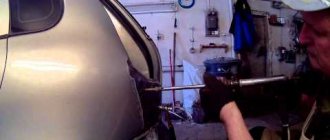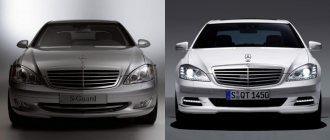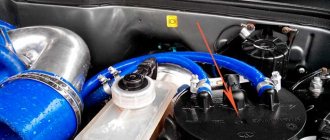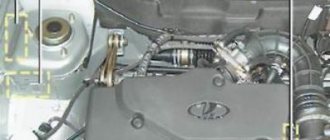ISOFIX (International Standards Organization FIX) is a fastening system developed by the International Organization for Standardization (ISO), standard number ISO 13216. The purpose of the standard is to improve the safety of children in cars by creating for automakers a single universal system for simple and reliable fastening of child restraint systems (car seats) , infant carriers, boosters) and reducing cases of their incorrect installation in vehicles.
The development of the standard began in 1989 by 85 experts from 19 countries within the working groups ISO/TC22 “Road vehicles” and SC12 “Passive safety of crash protection”. Part 1 of the standard describing ISOFIX fastenings was published in 1999, the basic standard 13216-1 provides requirements for the location of fixation brackets, the distance between them and the geometry around the fastening points, as well as static strength. The bracket brackets must be rigidly connected to the car body, have a diameter of 6 mm, the length of the protruding part of one bracket is 25 mm, the distance between the brackets is 280 mm. Part 2 of the standard was published in 2004, ISO 13216-2 describes methods of fastening with the top rope (anchor strap) together with the main fastening brackets, regulates positioning zones, dimensions of the anchor bracket, static strength and other technical requirements. The top cable (anchor belt), according to the standard, can be used in combination with car seats secured with car seat belts. Part 3 of the standard was published in 2006, ISO 13216-3 regulates the dimensions of child restraint devices (car seats) and the classification of space in cars required to accommodate these devices.
Despite the fact that the Isofix standard was introduced quite a long time ago, fastenings began to be installed in basic car models in 2006. In Europe, since 2011, all manufactured cars must have the Isofix fastening system.
What is Isofix, why is it needed and what are the misconceptions about it?
When young parents are faced with the problem of choosing a child car seat, they read a lot of strange and “scary” words, the meaning of which they know nothing about, but they begin to believe that it is very necessary. I'm talking about terms such as Isofix (in various interpretations and with various additions such as Plus and others), anchor fastening, “leg” and others. Without understanding the need, they begin their selection with a strict decision that the name of the chair should contain the word “Isofix”. Therefore, I decided that I need to understand in more detail what it is and tell you.
Design and principle of operation
The Isofix system consists of 2 components:
- two brackets (sleds) as part of the child car seat platform;
- steel brackets (reciprocal part of the fastening), rigidly connected to the body.
To secure the child seat in the car, you need to insert the slide into the brackets and close the locks. The design prevents the installation of a car seat with errors: it is fixed correctly or not fixed at all. To remove the chair from the interior, you need to unlock the locks.
The distance between Isofix brackets is standard for any restraint system with such a fastening system. The mate is usually located on the left and right seats in the back, but there are cars that have Isofix anchors installed on each seat (except the driver's).
What is Isofix?
This is a method (system) of rigidly attaching a child car seat to a car. Isofix is considered an international standard for manufacturers of cars and car seats. The main advantage of this system is that it reduces the likelihood of incorrect installation of the seat, and also increases the degree of protection for the child. Without Isofix, about 70% of incorrect seat installations occur. With the Isofix system, you just need to correctly direct and click the locks on the brackets that are in the car.
This system has two so-called brackets, which are located at the base of the child seat. They cling to the car's brackets, which are located between the back and seat of the car seat. Most often these are the seats in the back of the car and are located on the right and left of the sofa.
What if you don't find Isofix fasteners in your car?
It often happens that a car is equipped with an Isofix system, but it cannot be found. Even if you have a modern car. The answer is simple - there are no fastenings in the car. You need to contact the service center and order an Isofix installation. As a rule, this does not take much time.
Fastening system
Many drivers ask whether it is possible to install Isofix themselves if this option is not provided in the car? Such a car does not have the necessary fasteners and it will be difficult to install the brackets. In addition, such an installation will not meet the requirements and standards. Self-indulgence can only do harm.
If there is no Isofix system, then it is better to choose another reliable and proven child car seat. Expensive models provide security that is not inferior to Isofix.
Which child car seats can be found with Isofix?
This system is used for car seats of groups 0+ and 1. Also, universal seats suitable for use by these age groups are also equipped with Isofix. This includes transporting a child up to approximately 3-3.5 years old and weighing up to 18 kg. And most importantly, such a chair should have its own built-in internal seat belts. This is all taken into account by strict standards and there cannot be any other variations.
In these groups of car seats, you can find real Isofix, which absorbs the full force of the impact in an accident and holds the seat and child in place. It offers great benefits in security and installation.
Which cars have the Isofix system - the history of its implementation
In the 90th year of the last century, the International Organization for Standardization introduced a unified ISO standard for the Isofix system of fixation (fastening) of child car seats. These standards were reflected in the edition of the ECE R-44 rules in 1995 and, starting from 1996, it became mandatory in European countries to include fastening brackets rigidly connected to the car body, located at a distance of 280 millimeters, into the design of cars, for those developed from this year cars.
These connectors should be located between the rear seat cushion and the backrest, marked with the words “Isofix” and a picture of a cradle. Since 2011, the rules have become mandatory for all cars sold and manufactured in the European Union.
Let's look at Isofix for each individual group.
– group 0+ (from 0 to 13 kg). Basically, Isofix is not located in the cradle-car seat itself, but in the base on which this seat is placed. With this, manufacturers try to achieve maximum convenience for parents and baby, because... you don’t have to take your sleeping child out of the chair; they simply remove it from the base and carry the child home in the cradle-car seat. This gives a great advantage over fastening the chair with belts; you don’t have to deal with installing the chair again and again every time, you just put it on the base and also remove it using a handle or button.
The only drawback and inconvenience of this variation is that the base is purchased separately and, as a rule, it costs the same as the chair, or even more. After the child has grown up and there is a need to buy a car seat of the next group, the base for the new seat is no longer suitable (there is, of course, an exception, Maxi Cosi Pebble for example).
-group 1 (from 9 to 18 kg). In this group, Isofix is built into the base of the chair itself (with the exception of the example written above).
– universal chairs 0+/1. There are more options here. Isofix is also located in the base of the chair. But due to the fact that such a car seat must be installed in the direction and vice versa, there are nuances. Isofix can only be used for group 0+, or the chair can be rotated to change the direction of installation, or the chair can generally be rotated a full 180 degrees, which also makes it possible to conveniently get the child in and out (for example, this Romer Dualfix chair).
There are also several additional fastenings that increase safety. But many do not understand what they are and why they are needed and whether they are needed at all. Let's figure out what a “leg” and Top Tether are.
Due to the fact that Isofix is a fastening at two points along one axis, in some cases of an accident there is a need for a third point of support so that the seat does not move forward. To do this, we came up with two types of additional support:
- "Leg". This is a retractable floor support (telescopic “leg”), which is located in the front of the chair. It reduces the load on the isofix and prevents the seat from moving when the car rotates.
- Top Tether anchorage. It looks like an additional original belt that comes out from the back of the car seat. It has a carabiner at the end, which is attached to a bracket in the car (it is either in the trunk floor or behind the second row of seats in the car). Nowadays new cars are produced with a special place for this mount.
By the way, I have a review of the Nania I-Max SP chair, which uses the Top Tether “leg”.
Since Isofix takes on heavy loads, it is not allowed to be used if the child weighs more than 18 kg. Also, the chair itself with this system should not weigh more than 15 kg.
There are car seats that can be installed with Isofix without a third support point, but only with specific cars (the list is usually included with the child seat and is quite large).
Advantages and disadvantages of Isofix
The Isofix system has both advantages and disadvantages. Its advantages include the following.
- Easy to install. It is very easy to install a child seat on any car that has the appropriate base. This does not require any special skills or even specialized tools. The installation can be carried out, as they say, “with your bare hands.”
- Maximum reliability. The latches hold the bracket firmly enough. Therefore, significant displacement or overturning of the fixed structure is practically excluded. This means that the baby's movement becomes much safer.
- Versatility. Most passenger car models use Isofix. Thanks to this, any seat can be installed on any vehicle. This is very convenient - there is no need to select a device specifically for your car.
- Long service life. Car seats have a rigid frame made of stainless steel. It is rigidly attached to the guides, which are attached to the brackets. This guarantees strength, and therefore a long service life of the structure.
- Possibility of use for children of different ages. Isofix standard seats are installed in the direction of travel of the vehicle, so children under the age of 1 year can be transported in them without any problems (subject to the requirements for the size of the device).
And these are the main shortcomings of the system.
- Risk of injury in a frontal collision. The rigidity of the seat ensures its reliability. However, this also has the other side of the coin - in the event of a head-on collision, it takes over the entire impact impulse. This is fraught with injuries to various parts of the child’s spine. Systems that are secured with belts have a certain degree of shock absorption, so this does not happen there.
- Weight. Since the guides and frame are made of stainless steel, the structure is quite heavy. This makes it difficult to carry by hand.
- Price. Models with Isofix are 1.5 - 2 times more expensive than others. This is due to the fact that manufacturing car seats for children from metal is expensive.
- Inability to ensure the safety of an older child. Isofix does not guarantee protection for small passengers if they weigh more than 18 kilograms. Therefore, it is more suitable for children under 6 – 7 years old. Of course, you can also transport older children. But in this case, the car seat will simply make the ride more comfortable, but will not be able to protect children in the event of an accident.
Another fairly common problem that arises when using Isofix is misalignment of the guides and brackets. Although ISO has established the distance that should be required from one anchorage to another, not all seat and car manufacturers adhere to the standard. Sometimes they allow a deviation of 0.5 - 1 centimeter. Despite the fact that this is very small, it will not allow the structure to be mounted normally. This problem most often occurs when installing the system in the rear seat. The situation with the front ones is much better - everything is usually mounted here without any problems.
Car radios
"Isofix" and group 2-3 (for children from 3 years old, 15-36 kg)
In this age group, this is not the “Isofix” that I described above. Due to the fact that real Isofix cannot be used after reaching a certain weight, the child is fastened with a group 2-3 car seat using standard belts, and the so-called “isofix” is called other derivative words - “isophyte”, “kidfix”, etc. .
It is considered a compatible mounting method, since the main safety function is performed by a standard belt. Therefore, the seat must be able to move forward under heavy braking in order for the belt to engage and keep the child in place. But Isofix would not have given such an opportunity, so they came up with other special designs that allow the chair to move forward. And it is for this same reason that the “leg” and the Top-tether belt are not found in this group.
What's the point of this then? Yes, this system does not bear a special security burden in groups 2-3. But there are also positive aspects: it limits the displacement of the seat in a side collision; it is more convenient to seat the child, as the chair is more stable; There is no need to fasten the seat belts if you are eating without a child.
Other analogues - Latch system
In the United States, the equivalent of Isofix is the Latch system. It is similar to Isofix, but has some design differences. Instead of rigid brackets, the Latch system uses soft straps with carabiners. They also attach to brackets in the seat. The result is not a rigid, but a movable coupling of the car seat. But Latch also has its winning sides.
Latch Mount
Advantages of the Latch system:
- elastic coupling produces less vibration;
- lighter weight of the car seat (about 2-2.5 kilograms compared to Isofix);
- maximum child weight for the Latch system is 30 kilograms;
- Each lock can be fastened separately, and not simultaneously as in Isofix.
- The American analogue is also compatible with Isofix. If desired, you can install both models.
Disadvantages of the Latch system:
- the movable mount is accompanied by a high risk in the event of a side impact;
- Latch chairs are expensive - there are no budget models;
- Seats can only be installed on the rear side seats;
- In Russia and the CIS countries, the Latch system is not as widely represented as Isofix.
How does Isofix work for universal group 1-2-3 car seats?
Many people want to buy a super-universal option that will last a long time, be economical and convenient, and must be equipped with Isofix. But there is a “catch” in this group with such a system. Isofix cannot work on all groups at once, for the same reason as described above. There were attempts to create such a universal chair at Romer, but, alas, it did not work out. For group 1, in such a chair, isofix performs its function, but for groups 2 and 3 it has an exclusively decorative function.
There is a chair in this group with safety tables and isofix. In this case, for group 1, Isofix fixes the seat in the car, but the main safety is provided by the table, and for groups 2-3, the safety is provided by regular seat belts, which fasten the child and the seat, and here Isofix again does not bear the active load.
Options for universal car seats with built-in seat belts and Isofix are starting to appear, which are suitable for all groups at once. But for the most part, test drives have not been carried out on these models.
There is, of course, also an option from America, the so-called LATCH. It differs from Isofix in that instead of metal car seat brackets, the seat is attached with straps with latches. But the necessary tests have not been carried out on them, so you can only rely on the tests of the manufacturers themselves at your own peril and risk.
What does the Isofix mount look like and its design features?
To ensure the possibility of attaching Isofix car seats, the design of the car seats must include two metal brackets placed at a standard distance from each other. This fastener is included in the basic equipment of vehicles manufactured since 2006. Mounting points are usually marked with Isofix.
As a rule, the two rear outer seats are equipped with Isofix fastenings; on some cars they are available on all seats.
In any case, before purchasing a car seat, you should carefully examine all seats, since they can be located hidden, and may not always be indicated with appropriate information signs, especially in cases where the upholstery of the seats has been changed.
In some car models, these may be buttons with pictograms.
In child car seats, Isofix fastening elements can be located on different sides. Before you buy a car seat with an Isofix mount, you need to familiarize yourself with how it will be located in the car.
Options using additional structural elements are possible. These may be options such as “floor support” or Top Tether, “anchor” fasteners.
Top Tether “anchor” fasteners require the presence of an additional fastening element (bracket). Sometimes it is located in the trunk area, seat backs, even on the ceiling. The brackets are located hidden, they can be found by the corresponding designations with the “anchor” icon.
The “floor emphasis” option is more versatile and reliable. First, some vehicles do not come equipped with additional brackets for the “anchor” option. Secondly, the presence of an additional support on the floor increases the reliability of the structure and reduces the possibility of the structure overturning in the event of a collision.
Sometimes additional floor support can be purchased separately. It is height adjustable as different seats have different seating heights.
Let's dispel some misconceptions about Isofix:
- The first and most common misconception is “Isofix car seats are safer.”
I think many people already understand from the article that for groups 0+ and 1 this is true, but for other groups it is not so. For them, Isofix does not bear any safety burden.
Of course, group 0+ and 1 seats with Isofix show high results in crash tests, although there are exceptions. And we must not forget that the quality of safety depends not only on the use of this system, but also on a number of other qualities inherent in the car seat, which can provide additional protection.
- The second misconception is that some believe that Isofix is more dangerous due to its rigid fastening than fastening a car with a seat belt, since the belt does not operate abruptly and can stretch a little, therefore, there is less load on the child.
Many tests have been carried out on this matter and they show absolutely the opposite result. Therefore this is a big misconception.
Here I also want to add that if the seat has a good belt tensioner, then the seat shows better results in tests, since there is less load on the child.
ISOFIX is one of the safest fastenings!
Seats equipped with Isofix mounts are rigidly attached to the car body, which makes the seat more stable during a collision. There is a misconception that such a rigid fastening is dangerous for the child. And, supposedly, seats with belt fixation are less traumatic due to free movement until the car’s belts are fully tensioned. Numerous experiments refute this theory. Firstly, crash tests with the new generation Hybrid III dummies showed that seats with Isofix provide significantly less stress on the neck. This is a consequence of a rule that has long been known to specialists in the field of passive safety: the more stable the seat is during a collision, the faster the restraint systems begin to act, the better the occupants are protected. In addition, the internal belts of the car seat (which hold the child) are designed in such a way that the inertia of the baby’s movement is absorbed due to their elastic deformation and therefore, in general, the entire child safety system is quite elastic. Secondly, during a collision there is a sharp drop in speed from the original to zero in a short period of time. This process is very fast, but not instantaneous, because... The car body deforms for some time. And this is good, because... overload from an impact does not occur instantly, in one sharp peak, which we might not survive, but gradually. Same with the car seat inside. If it is not rigidly attached to the body, then its braking, and therefore the braking of the child fastened with internal straps, does not begin immediately. It turns out that the child extinguishes his kinetic energy in a shorter time interval than the body of a car, and receives a much larger peak load, which is precisely what poses a danger. For the same reason, the best safety results among Isofix seats with belt fastening are those that have a good belt tensioner.
Where to buy and how to choose a car seat with isofix
When purchasing a chair, find out if the car has Isofix; for example, Hyundai Solaris produced before 2004 does not have such fastenings. If this is your case, the purchased chair will not be able to be installed.
Be extremely careful when purchasing a car seat. Unfortunately, not all stores offer high-quality goods. Therefore, it is better to make such an important and expensive purchase in specialized reputable retail outlets.
When purchasing goods through an online store, ideally you should contact the company’s warehouse or showroom directly. Here you can independently verify that the device corresponds to the declared parameters and its mechanisms work normally.
In this case, preference should be given to certified devices with appropriate markings. It must indicate the number, as well as the country that issued the certificate. Its presence implies mandatory crash testing of the model and a high level of safety.
Table
Cars that have an isofix child seat mounting system:
| Brand | Model | Year |
| Alfa Romeo | 147 | 2000 |
| 156 | 1997 | |
| Cross Wagon Q4 | 2004 | |
| 159 | 2005 | |
| Giulietta | 2010 | |
| GT | 2004 | |
| Audi | A1 (8X) | 2010 |
| A2 | 2000 | |
| A3 (8L) | 1997 | |
| A3 (8P) | 2003 | |
| A4 (8E) | 2002 | |
| A5 | 2007 | |
| A6 (C6) | 2004 | |
| A8 | 2002 | |
| Q3 | 2011 | |
| Q5 (8R) | 2009 | |
| Q7 | 2006 | |
| RS3 | 2010 | |
| RS4 | 2002 | |
| RS6 | 2004 | |
| TT | 2006 | |
| S4 | 2002 | |
| S6 | 2004 | |
| S8 | 2002 | |
| BMW | 1er | 2008 |
| 3er | 1998 | |
| 3er (E92 / 320 d) | 2010 | |
| 5er (E39) | 1995 | |
| 6er Cabrio Coupé | 2004 | |
| 7er | 2001 | |
| X1 | 2009 | |
| X3 | 2004 | |
| X5 | 1999 | |
| X6 | 2008 | |
| Z4 | 2002 | |
| Chevrolet | Aveo | 2006 |
| Epica | 2006 | |
| Cruze | 2009 | |
| Captiva | 2006 | |
| HHR | 2006 | |
| Kalos | 2004 | |
| Lacetti | 2004 | |
| Matiz | 2004 | |
| Chrysler | Nubira | 2004 |
| 300 C | 2004 | |
| Grand Voyager | 2001 | |
| Voyager | 2001 | |
| Sebring | 2003 | |
| PT Cruiser | 2000 | |
| Citroën | Berlingo I | 1999 |
| Berlingo II | 2002 | |
| Berlingo III | 2008 | |
| C-Crosser | 2007 | |
| C1 | 2005 | |
| C2, 3, 4 | 2004 | |
| C5 | 2001 | |
| C6 | 2005 | |
| C8 | 2003 | |
| C3 Picasso | 2009 | |
| C3 Pluriel (Cabrio) | 2003 | |
| C4 Picasso | 2007 | |
| C4 Grand Picasso | 2006 | |
| C5 Break | 2000 | |
| Jumper | 2007 | |
| Jumpy | 2007 | |
| Xsara Picasso | 1999 | |
| Nemo | 2007 | |
| Dodge | Avenger | 2007 |
| Caliber | 2006 | |
| Durango | 2004 | |
| Journey | 2008 | |
| Nitro | 2006 | |
| Fiat | 500 | 2007 |
| Bravo | 2007 | |
| Croma (generation I) | 2005 | |
| Doblò | 2001 | |
| Ducato | 2009 | |
| Grande Punto | 2005 | |
| Idea | 2003 | |
| Multipla | 2004 | |
| Panda | 2003 | |
| Punto Classic | 1999 | |
| Qubo (Fiorino III) | 2008 | |
| Sedici | 2006 | |
| Scudo | 2007 | |
| Stilo | 2001 | |
| Ulysses | 2003 | |
| Ford | C-MAX | 2003 |
| Galaxy | 1995 | |
| Focus | 2004 | |
| Fiesta | 2002 | |
| Grand C-Max | 2011 | |
| Ka | 2002 | |
| Kuga | 2008 | |
| Maverick | 2005 | |
| Mondeo Combi | 2000 | |
| Mondeo Limousine | 2004 | |
| Transit Vario-Bus | 2006 | |
| S-MAX | 2006 | |
| Honda | Accord (8th generation) | 2008 |
| Civic | 2000 | |
| CR-V | 2005 | |
| Jazz | 2001 | |
| Hyundai | Accent | 2006 |
| Getz | 2002 | |
| Grandeur | 2005 | |
| Matrix | 2002 | |
| i10,i20 | 2008 | |
| i30 | 2007 | |
| ix35 | 2010 | |
| ix55 | 2009 | |
| Sonata | 2001 | |
| Santa Fe | 2002 | |
| Terracan | 2002 | |
| Tucson | 2004 | |
| Jaguar | S-Type | 1999 |
| X-Type | 2001 | |
| XJ | 2003 | |
| XF | 2008 | |
| Jeep | Commander | 2006 |
| Compass | 2007 | |
| Cherokee | 2002 | |
| Grand Cherokee | 2003 | |
| Patriot | 2007 | |
| Wrangler (JK) | 2007 | |
| KIA | Carens | 2002 |
| Carnival | 2006 | |
| cee'd | 2007 | |
| Cerato | 2004 | |
| Magentis | 2002 | |
| Opirus | 2003 | |
| Picanto | 2004 | |
| pro cee'd | 2006 | |
| Rio | 2005 | |
| Sedona | 2006 | |
| Sorento | 2002 | |
| Sportage | 2004 | |
| Soul | 2009 | |
| Venga | 2009 | |
| Land Rover | Discovery 3 | 2004 |
| Defender | 2007 | |
| Freelander | 2006 | |
| Range Rover | 2002 | |
| Lexus | GS 300 | 2000 |
| GS 450h | 2000 | |
| IS 200/300 | 2001 | |
| IS 220d | 2005 | |
| IS 250 | 2005 | |
| IS F | 2005 | |
| LS 460 | 2006 | |
| LS 600h | 2006 | |
| RX 300 | 2003 | |
| RX 350 | 2003 | |
| RX 400h | 2003 | |
| Mazda | 323F | 2000 |
| CX-7 | 2009 | |
| Mazda2 | 2007 | |
| Mazda3 | 2003 | |
| Mazda5 | 2005 | |
| MX-5 (NC) | 2005 | |
| MX-5 (NB) | 1998 | |
| Mazda6 | 2002 | |
| MPV | 1999 | |
| Premacy | 1999 | |
| Mercedes-Benz | A-Class | 1997 |
| B-Class | 2005 | |
| C-Class | 2000 | |
| CLC Sportcoupé | 2008 | |
| CLK Cabrio Coupé | 2002 | |
| CLS | 2004 | |
| E-Class | 2002 | |
| GL-Class | 2006 | |
| GLK | 2008 | |
| R-Class | 2005 | |
| M-Class | 1997 | |
| S-Class | 2002 | |
| Sprinter | 2006 | |
| Vaneo (V414) | 2001 | |
| Viano | 2010 | |
| Viano (FUN) | 2003 | |
| Vito Bus | 2006 | |
| Mini | MINI Clubman | 2007 |
| Mitsubishi | Grandis | 2004 |
| L200 | 2006 | |
| Lancer | 2003 | |
| Outlander | 2006 | |
| Pajero | 2001 | |
| Shogun | 2006 | |
| Nissan | Almera | 2000 |
| Micra | 2003 | |
| Murano | 2003 | |
| Navara | 2006 | |
| Note | 2006 | |
| NV 200 | 2010 | |
| Pathfinder | 2006 | |
| Primastar | 2001 | |
| Pixo | 2009 | |
| Primera | 2002 | |
| Tiida | 2004 | |
| Qashqai | 2007 | |
| Qashqai +2 | 2008 | |
| X-TRAIL | 2002 | |
| Opel | Astra (H) | 2004 |
| Astra (Twin Top) | 2006 | |
| Agila | 2002 | |
| Antara | 2006 | |
| Combo (C) | 2001 | |
| Corsa (C) | 2000 | |
| Meriva | 2002 | |
| Insignia | 2008 | |
| Vectra | 2002 | |
| Vivaro | 2006 | |
| Signum | 2003 | |
| Zafira (A) | 1999 | |
| Zafira (B) | 2005 | |
| Peugeot | 107, 1007 | 2005 |
| 206 | 2002 | |
| 206 S.W. | 1998 | |
| 206 CC | 2000 | |
| 207 | 2006 | |
| 307 | 2001 | |
| 307 CC | 2003 | |
| 307 S.W. | 2006 | |
| 307 S.W. | 2001 | |
| 3008 Crossover | 2009 | |
| 308 | 2007 | |
| 308 S.W. | 2007 | |
| 4007 | 2007 | |
| 407 | 2004 | |
| 5008 | 2009 | |
| 607 | 2000 | |
| 807 | 2003 | |
| Partner | 2004-2005 | |
| Partner Tepee | 2008 | |
| Porsche | Cayenne | 2003 |
| Panamera (970) | 2009 | |
| Renault | Clio | 2005 |
| Clio | 1998 | |
| Espace | 2000 | |
| Grand Space | 2000 | |
| Grand Modus | 2008 | |
| Grand Scenic | 2003 | |
| Kangoo | 1999 | |
| Kangoo be bob | 2009 | |
| Koleos | 2008 | |
| Laguna | 2001 | |
| Megane | 2003 | |
| Megane | 1999 | |
| Modus | 2004 | |
| Scenic (JM) | 2003 | |
| Traffic | 2001 | |
| Twingo | 2007 | |
| Vel Satis | 2002 | |
| Seat | Alhambra | 1996 |
| Alhambra (facelift) | 2004 | |
| Altea (XL) | 2006 | |
| Altea (FR) | 2005 | |
| Altea (Freetrack) | 2007 | |
| Arosa | 1998 | |
| Cordoba | 1999 | |
| Exeo | 2009 | |
| Ibiza (3rd generation) | 2002 | |
| Ibiza (4th Typ 6J) | 2008 | |
| Leon | 1998 | |
| Toledo | 1999 | |
| Saab | 9-3 (YS3F) | 2002 |
| Skoda | Fabia | 1999 |
| Fabia II | 2007 | |
| Oktavia Combi, I (1U) | 1996 | |
| Octavia II | 2004 | |
| Yeti | 2009 | |
| Roomster | 2006 | |
| Superb | 2001 | |
| Subaru | Forester | 2008 |
| Impreza | 2000 | |
| Justy (G3X) | 2003 | |
| Legacy | 2003 | |
| Tribeca | 2006 | |
| Outback | 2004 | |
| Suzuki | Alto | 2009 |
| Ignis | 2004 | |
| Jimny | 1998 | |
| Liana | 2004 | |
| Splash | 2007 | |
| SX4 | 2006 | |
| Swift | 2005 | |
| Vitara | 2005 | |
| Wagon R | 2002 | |
| Toyota | Aygo | 2005 |
| Avensis (T25) | 2003 | |
| Avensis Verso | 2001 | |
| Auris | 2007 | |
| Corolla (E11) | 1997 | |
| Corolla Verso | 2001 | |
| Land Cruiser | 1998 | |
| Prado | 2009 | |
| Land Cruiser (V8/200/J20) | 2008 | |
| Previa | 2000 | |
| RAV4 | 2000 | |
| Prius | 2003 | |
| Urban Cruiser | 2009 | |
| Yaris (P1) | 2003 | |
| Yaris Verso | 2001 | |
| Verso | 2009 | |
| Volvo | C30, 70 | 2006 |
| S40(V) | 2001 | |
| S60 | 2000 | |
| S80 | 1998 | |
| V40 | 2003 | |
| V50 | 2004 | |
| V50 (Type M) | 2004 | |
| V70 | 2000 | |
| XC60 | 2008 | |
| XC70 | 2007 | |
| XC90 | 2002 | |
| VW | Bora | 1998 |
| Fox | 2005 | |
| Caddy | 2000 | |
| Golf III, IV (Cabrio/Variant) | 1999 | |
| Golf IV | 1997 | |
| Golf V | 2003 | |
| Golf VI | 2008 | |
| Golf VI Variant | 2009 | |
| Golf Plus | 2005 | |
| Jetta | 2005 | |
| New Beetle | 2005 | |
| Lupo | 1998 | |
| Phaeton | 2002 | |
| Polo III (6N2) | 1999 | |
| Passat | 2000 | |
| Passat CC | 2008 | |
| Scirocco | 2008 | |
| Sharan | 2004 | |
| Sharan | 1998 | |
| Touran | 2003 | |
| T5 (Caravelle/Multivan) | 2003 | |
| Touareg | 2002 | |
| Tiguan | 2007 |
What else is worth reading
Tire pressure monitoring system
Installation of heated seats
Do-it-yourself liquid car sound insulation
Surround View System
Crash test results
Repeated crash tests have confirmed that in a number of vehicle modifications, the ISOFIX fastening system helps to achieve the maximum level of safety for a small passenger in the event of a collision between the vehicle and an obstacle or another vehicle.
Simplicity and convenience of fastening reduces the risk of incorrect fastening to a minimum level.
Child car seats are simply attached using latches to pre-prepared parts. It's hard to go wrong.
It is worth noting that a properly secured child seat largely ensures the safety of the child while the car is moving and in the event of an emergency.
